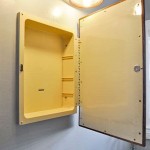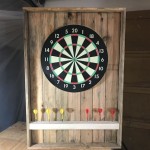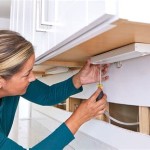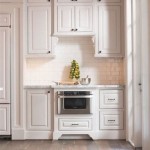How To Remove A Cabinet From The Wall
Removing a cabinet from a wall may seem like a daunting task, but with the right tools and approach, it can be accomplished efficiently and safely. This article will provide a comprehensive guide to the process, outlining the necessary preparations, safety precautions, and step-by-step instructions.
Preparation is Key
Before beginning the removal process, several preparatory steps are crucial. Clearing the cabinet of its contents is the first priority. This includes removing dishes, food items, or any other stored materials. Next, the area surrounding the cabinet should be cleared to provide ample working space and prevent accidents. This includes removing any obstacles such as furniture or decorative items.
Gathering the Necessary Tools
Having the right tools on hand will significantly streamline the removal process. Essential tools include a screwdriver, preferably with interchangeable bits to accommodate different screw types, a utility knife, a stud finder, safety glasses, work gloves, a pry bar, and potentially a reciprocating saw. A drill may also be helpful for removing stubborn screws.
Safety First
Safety should be the paramount concern throughout the entire removal process. Wearing safety glasses is crucial to protect the eyes from debris and dust. Work gloves will protect the hands from splinters and sharp edges. Turning off the power to any electrical outlets or fixtures connected to the cabinet is also a critical safety precaution.
Locating and Detaching the Cabinet
Most cabinets are secured to the wall studs using screws. A stud finder can be used to locate these studs. Once located, the screws securing the cabinet to the wall should be identified. A screwdriver, and sometimes a drill, will be used to remove these screws. It's important to keep track of the screws for potential reuse or for patching the wall later.
Dealing with Stubborn Screws
Occasionally, screws may be stripped or painted over, making them difficult to remove. In these situations, a screw extractor can be used. Alternatively, a drill can be used to carefully drill out the screw head. If the screw head is inaccessible, a reciprocating saw can be used to cut through the screw shank. This should be done with extreme caution to avoid damaging the surrounding wall.
Disconnecting Plumbing and Electrical Connections (If Applicable)
If the cabinet houses plumbing fixtures, such as a sink, the water supply lines must be shut off and disconnected before proceeding. Similarly, if the cabinet contains electrical wiring, such as for under-cabinet lighting, the power supply must be disconnected at the breaker box. These procedures are best handled by qualified professionals if one is not comfortable working with plumbing or electrical systems.
Carefully Removing the Cabinet
Once all screws and connections are removed, the cabinet can be carefully pried away from the wall. A pry bar can be helpful in this process. It's important to apply even pressure to avoid damaging the cabinet or the wall. If the cabinet is particularly large or heavy, enlisting the help of another person is recommended for safe removal.
Addressing Remaining Fasteners
After the cabinet is removed, any remaining screws or fasteners protruding from the wall should be removed. This will prevent injuries and facilitate the wall repair process.
Repairing the Wall
The wall where the cabinet was mounted will likely require some repair. This may involve patching holes left by screws, filling gaps with spackle, and repainting the affected area. This process will restore the wall to its original condition.
Disposing of the Cabinet
The removed cabinet can be disposed of in several ways. Depending on its condition, it can be donated to a charity, sold, or disposed of according to local regulations. Checking with local waste management services for proper disposal guidelines is recommended.
Considerations for Different Cabinet Types
Different types of cabinets may require slightly different approaches. For instance, upper cabinets often require more care during removal due to their height and potential for instability. Similarly, custom-built cabinets may have unique fastening systems that need to be considered.
Seeking Professional Assistance
While removing a cabinet is often manageable as a DIY project, certain situations may warrant professional assistance. If the cabinet is particularly large, heavy, or complex, or if there are significant plumbing or electrical connections involved, consulting a qualified contractor is a prudent course of action. This will ensure the cabinet is removed safely and efficiently, minimizing the risk of damage to the cabinet, the wall, or personal injury.

3 Ways To Remove Kitchen Cabinets Wikihow

3 Ways To Remove Kitchen Cabinets Wikihow

How To Remove Kitchen Cabinets Budget Dumpster

How To Take Down Kitchen Cabinets Rehang One Young House Love

How To Remove A Kitchen Cabinet

How To Take Down Kitchen Cabinets Rehang One Young House Love

3 Ways To Remove Kitchen Cabinets Wikihow

How To Remove Kitchen Cabinets Budget Dumpster

How To Remove Kitchen Cabinets

How To Remove Kitchen Cabinets
Related Posts








